Backgrounder
A Baby for Sale, a Mother Chained Up – How Chinese Netizens Are Pushing Specific Social Issues to the Forefront
The stories of Liu Xuezhou and the Xuzhou mother both developed in real-time while netizens pushed them to the front page, making them too big for state media to ignore.
Published
2 years agoon
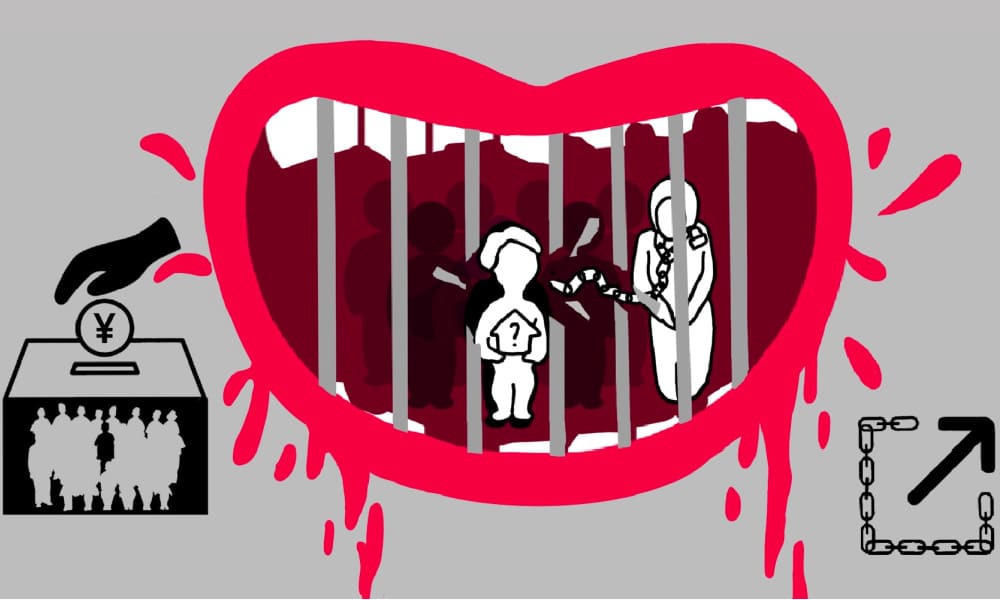
It only takes a spark to start a wildfire. From Liu Xuezhou to the Xuzhou mother, China’s online spheres have seen multiple major trending topics this year that started with one short video and then caused a social media storm with netizens highlighting and amplifying specific stories to address bigger social problems.
This is the “WE…WEI…WHAT?” column by Manya Koetse, original publication in German by Goethe Institut China, visit Yi Magazin: WE…WEI…WHAT? Manya Koetse erklärt das chinesische Internet.
It was December 6th of 2021 when a teenage boy posted a short video on Chinese social media. With a straight back, clear voice, and serious face, he looked directly into the camera and said:
“Hello everyone, I am Liu Xuezhou and I am looking for my biological parents. I was born in between 2004 and 2006 and around the age of three months old, I was bought by my parents, my adoptive parents, in Datong in Shanxi. I am healthy. I don’t have any congenital physical defects or diseases; I don’t have any obvious birthmarks or scars. At the age of four, my adoptive parents passed away due to an accident. I am now living in Nangong, Xingtai, in Hebei Province. I study in Shijiazhuang. I wish I’d found my biological parents sooner, to make up for what I missed. I hope you can help me spread my message so that those who suspect they might be my parents can see it.“
This video would be the start of a story followed by millions of Chinese netizens. It is the story of Liu Xuezhou (刘学州). The search for his parents and his death became one of the biggest topics on China’s social media of the past months.
Why did the tragic story of one teenage boy capture the entire nation? There are multiple reasons. By posting his call for help in finding his biological parents, Liu involved Chinese netizens in his journey from the start, allowing them to follow his story in real-time through his social media and news reports. Another aspect of Liu’s story is the resilience he showed despite his tough life, something that many admired about him.
But more importantly, Liu’s story is part of a recent broader interest in the stories behind the widespread problem of trafficking in women and children in China, with more people raising awareness on the tragedies caused by these practices and demanding justice for the victims.
Besides Liu’s story, the story of a Xuzhou mother-of-eight being tied up and living in abominable conditions in a shed also dominated online discussions for weeks on end.
Liu’s Story: Sold, Orphaned, Abandoned
After Liu Xuezhou posted the aforementioned video on Douyin, the Chinese version of the popular TikTok short video platform, it soon went viral and various Chinese news sites started reporting on Liu’s search for his biological family.
Liu’s resilience was impressive. In interviews, he said that his story did not define him and that he was determined to make something of his life. Since 2018, the young Liu was working to earn money while also going to school. His plan was to be admitted to university.
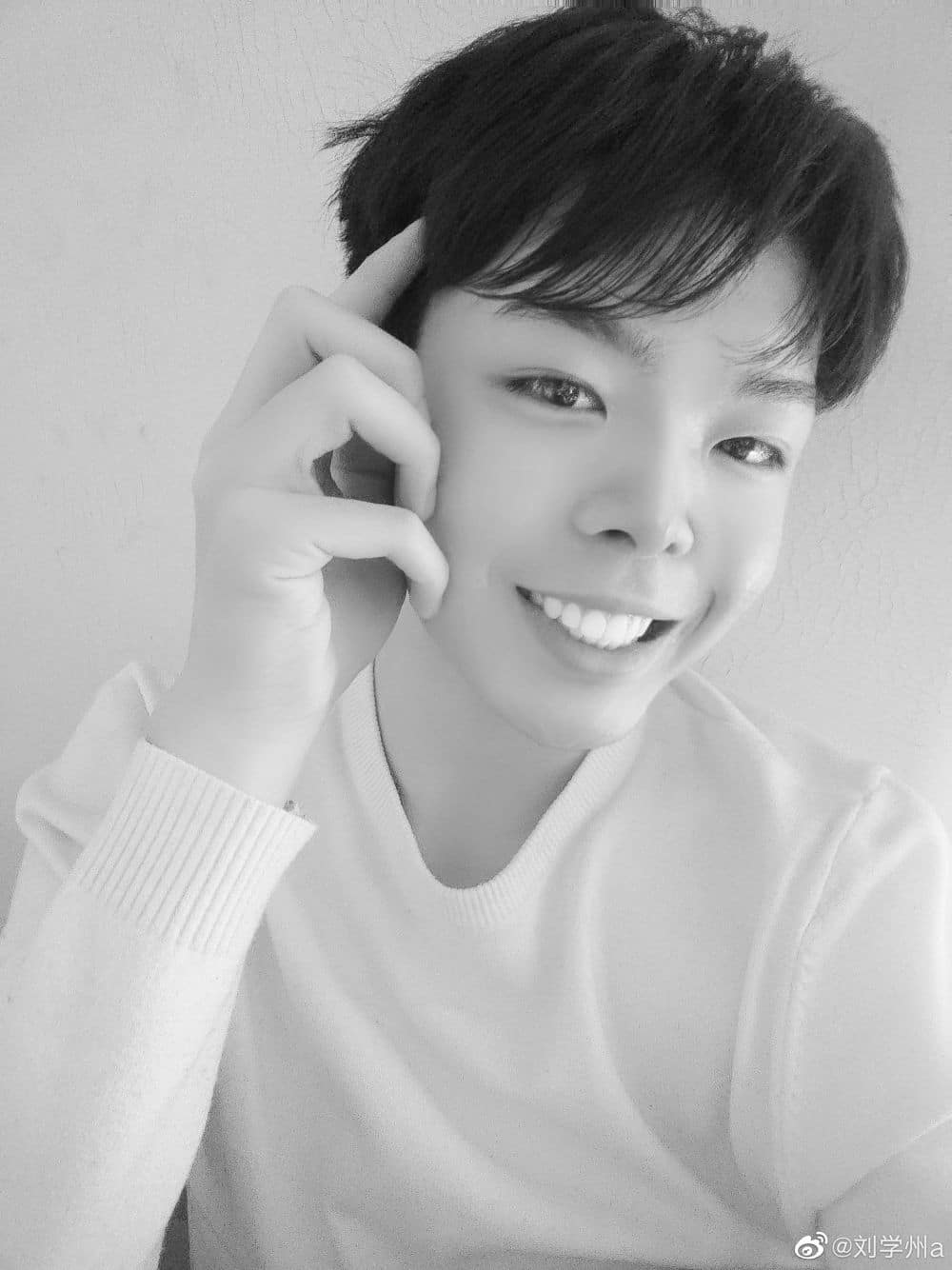
Liu Xuezhou, picture posted on his Weibo account.
After his adoptive parents died in a firework explosion, Liu was raised by his grandparents and was sent to boarding school. Liu’s childhood was not a happy one. Being so young without parents, he was a target of school bullies and had to change schools at least four times until, by grade six, he had finally found a school where he could thrive.
Many people supported Liu and wanted to help the teenage boy, who was thought to have been kidnapped as a baby and then bought by his adoptive parents through an intermediary at a Datong hotel for 30,000 yuan ($4735).
Although Liu’s birth certificate said he was born in September of 2005, nobody was sure how old Liu actually was, and his grandparents did not remember the details surrounding his adoption. By late 2021, as a 16-something-year-old, Liu felt it was time to get some answers and find his biological parents. How did he end up being adopted? Was he abducted? Were his parents still out there searching for him?
Through his own efforts – sped up by finding his vaccination records – and with some help of the police, Liu was able to trace down his biological parents. On the evening of December 15, Liu sent a message to a journalist reporting on the case: “I found my mum and dad.”
His parents’ story, however, was not what Liu had expected at all. After DNA tests confirmed that they were in fact his biological parents, Liu was ready to meet them. But what was supposed to be a happy reunion turned out to be a bitter disappointment.
Liu’s biological parents, who were living in Datong, were not together anymore. Liu soon learned that he had not been abducted as a child, but that he had been sold on purpose by his father. His parents were unmarried when they had him, and Liu’s father turned out to have used the money they earned by selling their baby to marry Liu’s birth mother. They married and had another son, but then ended up divorcing. Both remarried again, and Liu’s father even got divorced two more times after that.
Although some of the unhappy circumstances surrounding Liu’s reunion with his parents came out through his posts on social media throughout January of this year, most of the details surrounding his situation only became clear when Liu posted a farewell letter on his Weibo account on January 24th, just a few minutes past midnight.
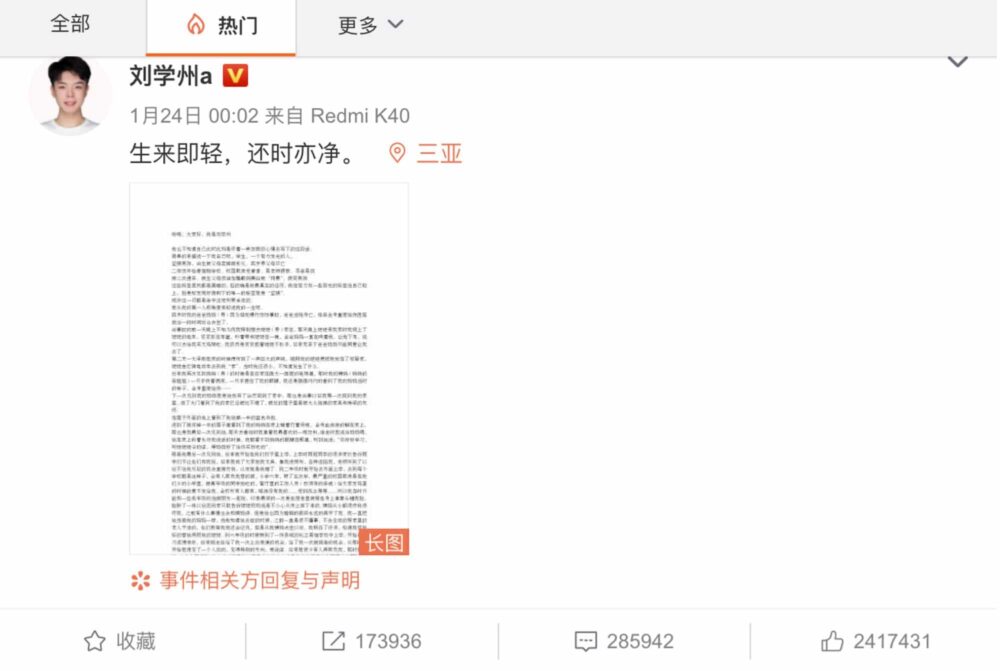
Liu Xuezhou’s last Weibo post including a farewell letter.
Titled “Born with little, return with nothing,” Liu posted a lengthy letter explaining his situation.
In this letter, Liu said that besides being sold as a child and becoming an orphan at the age of four, he was also severely bullied by classmates and molested by a teacher at school. His aunt, whom he loved as a mother, also left him behind after she moved away due to a broken marriage.
As he spiraled into depression, Liu felt a spark of hope when he saw the news about Sun Zhuo (孙卓), whose story became one of the major trending news stories of 2021. In 2007, when Sun was only four, he was stolen off the street by a human trafficker. His biological parents never gave up hope they would find their son again and sacrificed everything to be able to fund their search efforts. The Chinese film Dearest (亲爱的) was partly based on their story.
After a years-long search, Sun was found in 2021 due to the help of authorities and face recognition technology that helped trace the person suspected of abducting him. In an unexpected twist, Sun stated that he would prefer to stay with his adoptive parents, who had raised him for a decade. The story triggered many online discussions and raised more awareness on the issue of the trafficking of children in China in times of the country’s one-child policy. Sun’s biological father spoke to the media saying: “For 2022, my biggest wish is that all the abducted children can finally be found.”
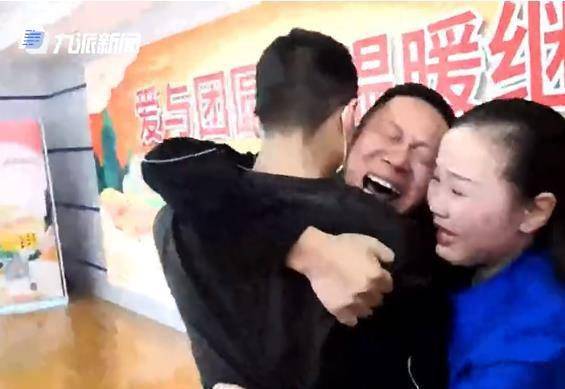
Image of the reunion of Sun Zhuo with his parents, who never stopped searching for him (image via Sohu).
It was Sun Zhuo’s story that inspired Liu to search for his own parents, and it was also Sun Zhuo’s story that brought more attention for Liu’s initial video, which struck a chord with many who hoped that he could also be reunited with his parents and actually stay with them.
Liu described how his biological father did not seem happy when Liu first contacted him, and seemed reluctant to meet. His biological father eventually did come to see him, but their communication afterward was not smooth. When his father told Liu that he was sold as a baby so that he could pay for the bride price to marry Liu’s mother, Liu was heartbroken and could not sleep for several days: he was not kidnapped, and his parents never searched for him.

Liu and his biological father on December 26, 2021.
His mother also was not elated that her biological son had found his way back to her. Liu felt unwanted, again, and was also searching for a home to live and was not sure who to turn to anymore. After he asked his biological father for help in buying or renting a place to live, he was blocked on WeChat. Liu then decided to take his parents to court.
Sharing screenshots on social media of the developments between him and his parents, Liu was condemned and bullied by netizens, who accused him of only wanting to find his biological parents for financial gains.
It was all too much for the teenage boy. In his farewell letter, he expressed the hope that the traffickers and biological parents would be punished for their deeds. Liu was later found to have committed suicide at a beach in the city of Sanya, and could no longer be rescued. Liu passed away within a month after meeting his biological parents at the age of just 15 years old.
By now, Liu’s farewell letter has been shared approximately 174,000 times on Weibo, it was ‘liked’ over 2,4 million times and has received thousands of comments.
The topic of Liu’s death exploded on social media and led to national outrage. Many people sympathized with the boy and were angry at all who failed him: “Poor child, abandoned and sold off by his parents, bullied and humiliated by his schoolmates, molested and discriminated by his teacher, cyberbullied by keyboard warriors. Now he’s dead!”
The injustice of Liu’s situation – starting with how he was sold as a child – is what angered people most. China Digital Times recently described how on the Weibo page of Dr. Li Wenliang, one of the doctors who raised the alarm about the coronavirus outbreak, many people also mention Liu Xuezhou. Dr. Li Wenliang was one of the eight so-called ‘whistleblowers’ who tried to warn his colleagues about the Wuhan virus outbreak in late 2019, but was censored and reprimanded by local police for making “false comments.” He later became infected with the virus himself while working at the Wuhan Central Hospital and passed away on February 7th of 2020, sparking a wave of anger and sadness on social media.
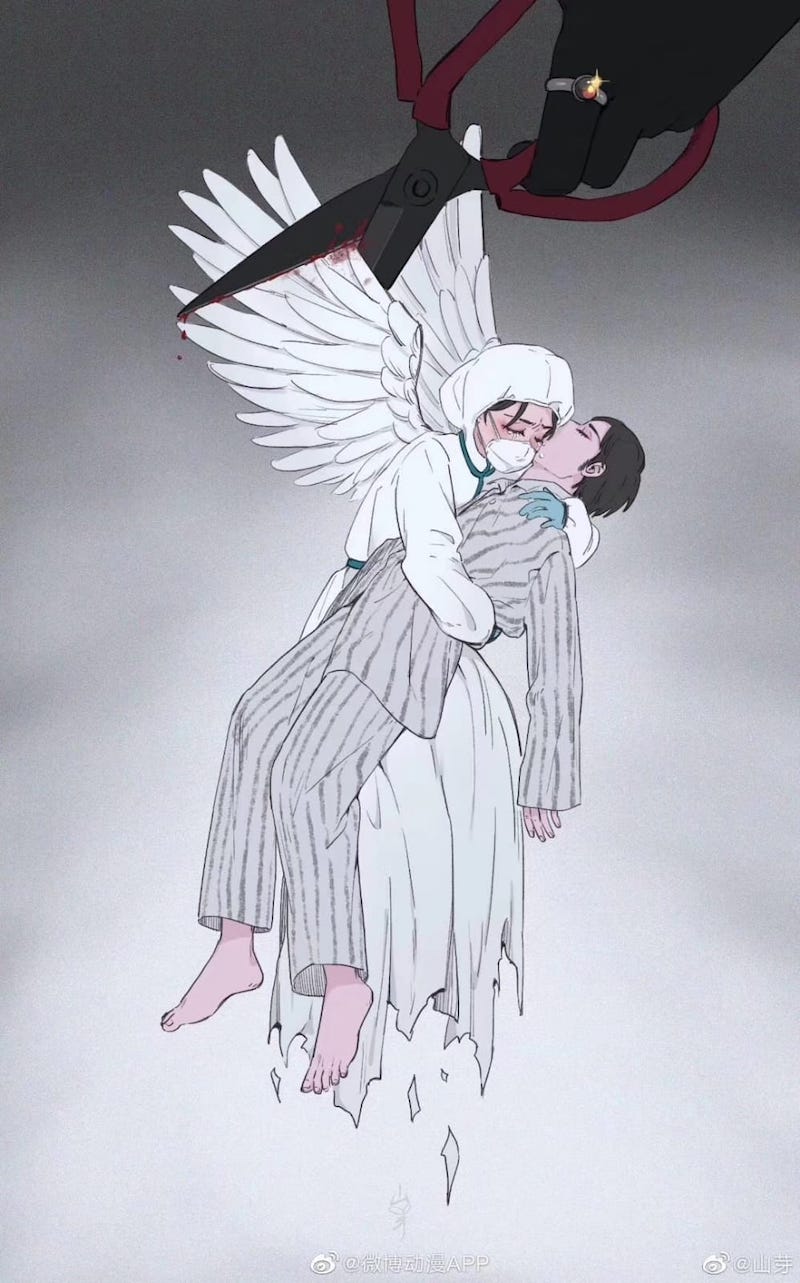
Illustration that went viral on social media at the time of Dr. Li’s death (read more here).
Over the past two years, Dr. Li’s Weibo page has become a digital Wailing Wall where people send little messages to remember Dr. Li, tell about their own anxieties and worries, but also address social injustices. As recorded by China Digital Times, one among thousands of comments said:
“Two years ago today, I had a sleepless night because of you, and my Weibo account once got shut down because I posted something about you. Over the past two years, I’ve often wondered: will this world become a better place? But between the Liu Xuezhou incident and the woman in Xuzhou with eight kids, I’ve been disappointed time and time again. If you happen to see Liu Xuezhou, please be good to him.“
Looking at Dr. Li’s Weibo account today, it is not just Liu Xuezhou who is brought up by commenters; ‘the woman in Xuzhou’ is also mentioned by dozens of people as someone experiencing injustice. But who is she?
The Chained-Up Mother in Xuzhou
In late January of 2022, right around the same time when Liu Xuezhou was one of the biggest topics on Chinese social media, a TikTok video showing a woman chained up in a shed went viral online and triggered massive outrage with thousands of people demanding answers about the woman’s circumstances.
The video, filmed by a local vlogger in the village of Huankou in Xuzhou, showed how the woman was kept in a dirty hut without a door in the freezing cold. She did not even wear a coat, and she seemed confused and unable to express herself.
To give the full story, here is the original video that caused the social media storm, which is still ongoing today (tw distressing content, not sure why the lock is blurred, as if that is the most shocking thing about this video..) pic.twitter.com/UOA5zrfeQ4
— Manya Koetse (@manyapan) January 30, 2022
Other TikTok videos that came out around the same time showed how the woman’s husband, a man by the name of Dong Zhimin (董志民), was playing and talking with their eight children in the family home right next to the hut where the mother was confined.
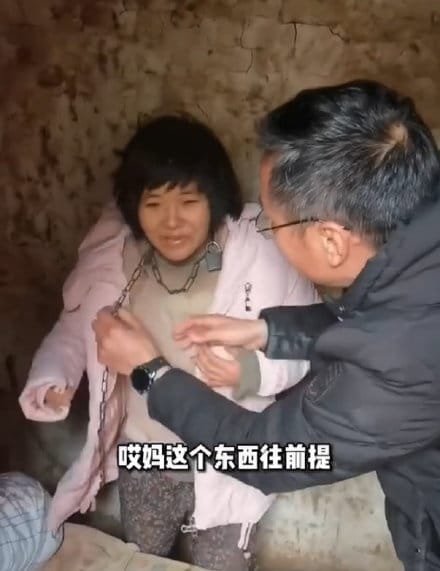
The video caused a storm on social media. Many netizens worried about the woman’s circumstances. Why was she chained up? Was she a victim of human trafficking? Was she being abused? How could she have had eight babies? Was she forced to have so many children? While netizens were speculating about the case and venting their anger, Weibo shut down some of the hashtags dedicated to this topic, but the topic soon popped up everywhere, and people started making artworks and writing essays in light of the case.
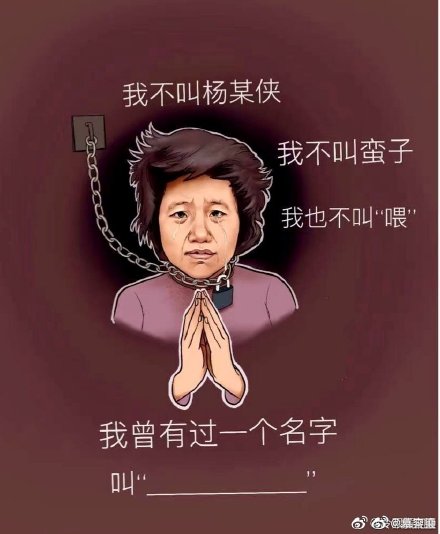
Following public demands, local authorities started looking into the case. An initial statement by Feng County, where the village of Huankou is located, was issued on January 28 and it said that the woman, named Yang (杨), married her husband in 1998 and that there was no indication that she was a victim of human trafficking.
The woman was dealing with mental problems and would display sudden violent outbursts, beating children and older people. The family allegedly thought it was best to separate her from the family home during these episodes, letting her stay chained up in a small hut next to the house.
The first statement raised more questions than it answered and more people, including influential Weibo bloggers and media insiders, started investigating the case. Meanwhile, it became clear that husband Dong Zhimin was giving interviews to other vloggers flocking to Huankou. Besides talking about his eight children (seven sons, one daughter) as future providers for the family, he also used his newly-acquired ‘fame’ to make money through social media. This only led to more online anger about Dong exploiting his wife and children.

Screenshots from the original Douyin (TikTok) video.
As the social media storm intensified, more official statements ensued. On January 30, Feng County local officials responded to the controversy in a second statement, in which the Xuzhou mother was identified as Yang *Xia (杨某侠) who allegedly once was “a beggar on the streets” in the summer of 1998 when she was taken in by Dong family and ended up marrying their 30-something son Dong Zhimin.
Local officials did not properly check and verify Yang’s identity information when registering the marriage certificate and the local family planning department also made errors in implementing birth control measures and following up with the family. The statement said that Yang had been diagnosed with schizophrenia and was now receiving treatment.
A third, fourth, and even fifth statement issued by authorities on February 7th, 10th, and 23rd confirmed what many on Weibo had suspected all along, namely that Yang had indeed been a victim of human trafficking. Xuzhou authorities said their investigation had brought them to the village of Yagu in Yunnan, a place that was mentioned on Yang’s marriage certificate.
Yang was identified as Xiaohuamei (小花梅), born and raised in Yagu. Yang’s DNA had been compared to that of the family of Xiaohuamei, and the DNA match confirmed that Yang was indeed Xiaohuamei. According to the statements, Xiaohuamei married and moved to another city in 1994, but she divorced and returned to her village two years later, which is when she allegedly also showed signs of mental illness.
Her parents, now deceased, then allegedly ordered a female fellow villager to take their daughter to Jiangsu to get married there. According to the woman, she took Xiaohuamei with her on a train from Yunnan to Jiangsu’s Donghai, but she allegedly ‘went missing’ shortly after arrival. The woman never reported her as missing to the police and she never notified the family.
That woman, along with another man and Dong Zhimin, are now held criminally responsible for illegal detainment and human trafficking. Xiaohuamei was reportedly sold to a man in Donghai for 5,000 yuan ($790) in 1998. Though Xiaohuamei managed to escape, she was sold twice again, eventually ending up with the Dong family.
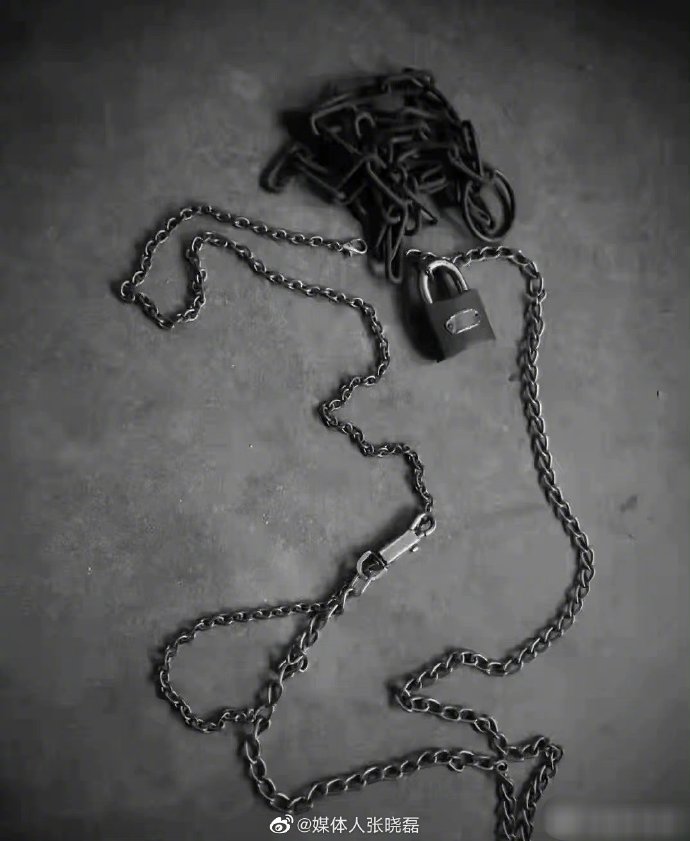
One of the many images shared on Chinese social media to raise awareness of the case of the Xuzhou mother and other women like her.
While details surrounding the case of the ‘chained Xuzhou mother of eight’ are still being discussed on Chinese social media, it has become clear that by now, ‘Yang’ has come to represent many more women like her. Over the past few weeks, the stories of other women who also might be a victim of human trafficking have surfaced, and the public outcry demanding justice for trafficked women is ongoing.
One Social Media Spark Starting a Wildfire
Both in the case of Liu Xuezhou and the Xuzhou mother, it should be noted that their stories initially did not catch the public’s attention because official news media reported them, but because of first-hand videos being posted on TikTok (Douyin) and then being picked up and shared by bigger accounts.
Both Liu’s video and the short video featuring the mother of eight were posted on accounts that were not necessarily very popular: starting as a small spark in an online environment with over 900 million social media users, they were shared, commented on, and then spread like wildfire.
Both stories developed in real-time while netizens were following the case, both stories eventually became too big for Chinese state media to ignore, and both Liu and Yang highlighted bigger social issues in contemporary China, mainly those relating to human trafficking.
Since these cases went viral, there has been a heightened focus on the problem of human trafficking, which mostly occurs in China’s poorer areas with weak governance. The trafficking of especially women and children has various purposes, including forced marriage and illegal adoption in areas where there is a shortage of women (along with a preference for baby boys).
China Daily recently reported that lawmakers and advisers are now pushing for heavier punishment for human trafficking crimes, suggesting that the current penalties imposed on the buyers of women and children are too weak; the maximum prison sentence for those who purchase abducted women and children is three years.
In the case of the Xuzhou mother, there has been online censorship but the ongoing intense public outrage eventually did lead to higher-level research into the case. The mother was rescued from her terrible situation, the human traffickers involved are being held responsible, and so are 17 officials, who will be punished by authorities for their wrongdoings in the case.
As for Liu Xuezhou, his adoptive family members have recently filed a request at the Sanya Public Security Bureau to launch another investigation into his case. Their request was accepted on February 23rd, with multiple people being suspected of criminal offenses, eventually leading to his death. On Weibo, many people are now demanding punishment for Liu’s biological parents.
In late January of this year, following the tragic ending to Liu’s story, Chinese state media1 emphasized how the widespread attention for these kinds of stories in the social media era is also changing how government agencies should interact with the public.
According to Dr. Liu Leming, associate professor at East China University’s Political Science faculty, government agencies need to follow up and respond more quickly to social incidents like these in the internet era: “When public issues emerge, people who are involved in social problems or incidents want to know, more than anything, whether their requests have been seen and who will handle their concerns.”
In light of these recent stories, the public is happy that actions have been taken, but they are not satisfied with how these cases were handled. Many argue that authorities have failed in being transparent, that local governments have not done enough to prevent these cases from happening, and that China should do more to put an end to human trafficking.
And so, they are still posting the stories of children like Liu and women like Xiaohuamei to keep raising awareness and to keep pressuring local authorities and lawmakers to take more action to eradicate these practices.
As Liu is no longer alive and Xiaohuamei, still hospitalized, cannot defend herself, Chinese netizens keep raising their voices for them. In doing so, they have not just impacted how authorities dealt with these specific cases, but they are also changing how cases such as these will be handled in the future.
One Weibo user discussing Liu and the Xuzhou mother wrote: “We need to get to the bottom of these kinds of stories: who is to blame, who made mistakes, and where do we go from here?”
In the meantime, online posts, videos, and artworks honor both Liu and Xiaohuamei, so that their stories will not be forgotten. “Dear little one, springtime has come,” one among thousands of messages still flooding Liu Xuezhou’s Weibo page says: “You have endured too many things that you should have never experienced. It should have been us, the adults, taking care of these things for you. You please go and rest now, we will finish the rest for you.”
By Manya Koetse
Follow @whatsonweibo
For information and support on mental health and suicide, international helplines can be found at www.befrienders.org.
1 Cao Yin and Li Yang. 2022. “Policymakers, Lawmakers Respond to Opinion Voiced Online.” China Daily Hong Kong, January 28, Page 1-2.
Featured image by Ama for Yi Magazin.
This text was written for Goethe-Institut China under a CC-BY-NC-ND-4.0-DE license (Creative Commons) as part of a monthly column in collaboration with What’s On Weibo.
Spotted a mistake or want to add something? Please let us know in comments below or email us. First-time commenters, please be patient – we will have to manually approve your comment before it appears.
Manya Koetse is the founder and editor-in-chief of whatsonweibo.com. She is a writer, public speaker, and researcher (Sinologist, MPhil) on social trends, digital developments, and new media in an ever-changing China, with a focus on Chinese society, pop culture, and gender issues. She shares her love for hotpot on hotpotambassador.com. Contact at manya@whatsonweibo.com, or follow on Twitter.

Also Read
Backgrounder
“Oppenheimer” in China: Highlighting the Story of Qian Xuesen
Qian Xuesen is a renowned Chinese scientist whose life shares remarkable parallels with Oppenheimer’s.
Published
10 months agoon
September 16, 2023By
Zilan Qian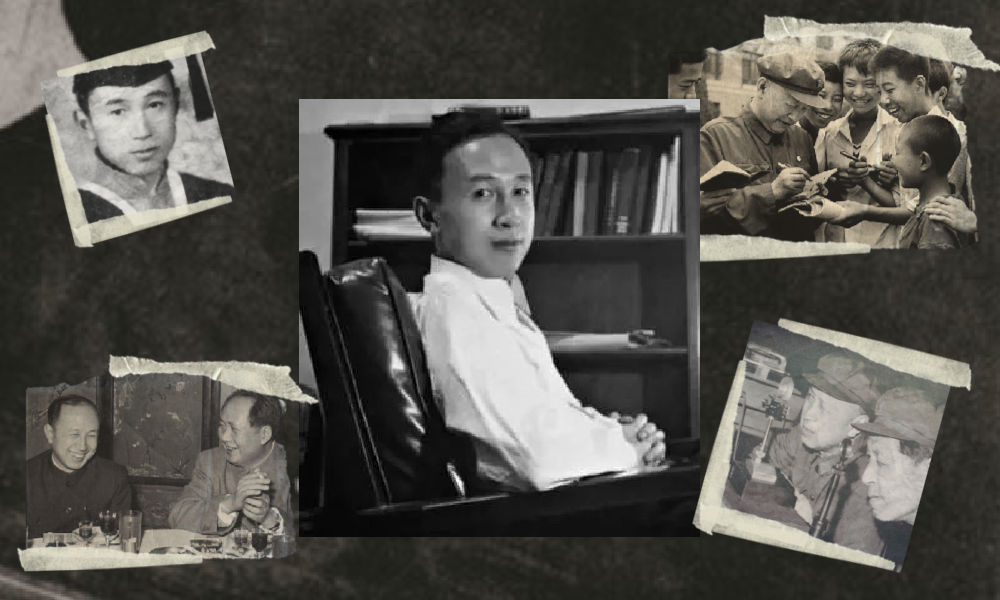
They shared the same campus, lived in the same era, and both played pivotal roles in shaping modern history while navigating the intricate interplay between science and politics. With the release of the “Oppenheimer” movie in China, the renowned Chinese scientist Qian Xuesen is being compared to the American J. Robert Oppenheimer.
In late August, the highly anticipated U.S. movie Oppenheimer finally premiered in China, shedding light on the life of the famous American theoretical physicist J. Robert Oppenheimer (1904-1967).
Besides igniting discussions about the life of this prominent scientist, the film has also reignited domestic media and public interest in Chinese scientists connected to Oppenheimer and nuclear physics.
There is one Chinese scientist whose life shares remarkable parallels with Oppenheimer’s. This is aerospace engineer and cyberneticist Qian Xuesen (钱学森, 1911-2009). Like Oppenheimer, he pursued his postgraduate studies overseas, taught at Caltech, and played a pivotal role during World War II for the US.
Qian Xuesen is so widely recognized in China that whenever I introduce myself there, I often clarify my last name by saying, “it’s the same Qian as Qian Xuesen’s,” to ensure that people get my name.
Some Chinese blogs recently compared the academic paths and scholarly contributions of the two scientists, while others highlighted the similarities in their political challenges, including the revocation of their security clearances.
The era of McCarthyism in the United States cast a shadow over Qian’s career, and, similar to Oppenheimer, he was branded as a “communist suspect.” Eventually, these political pressures forced him to return to China.
Although Qian’s return to China made his later life different from Oppenheimer’s, both scientists lived their lives navigating the complex dynamics between science and politics. Here, we provide a brief overview of the life and accomplishments of Qian Xuesen.
Departing: Going to America
Qian Xuesen (钱学森, also written as Hsue-Shen Tsien), often referred to as the “father of China’s missile and space program,” was born in Shanghai in 1911,1 a pivotal year marked by a historic revolution that brought an end to the imperial dynasty and gave rise to the Republic of China.
Much like Oppenheimer, who pursued further studies at Cambridge after completing his undergraduate education, Qian embarked on a journey to the United States following his bachelor’s studies at National Chiao Tung University (now Shanghai Jiao Tong University). He spent a year at Tsinghua University in preparation for his departure.
The year was 1935, during the eighth year of the Chinese Civil War and the fourth year of Japan’s invasion of China, setting the backdrop for his academic pursuits in a turbulent era.
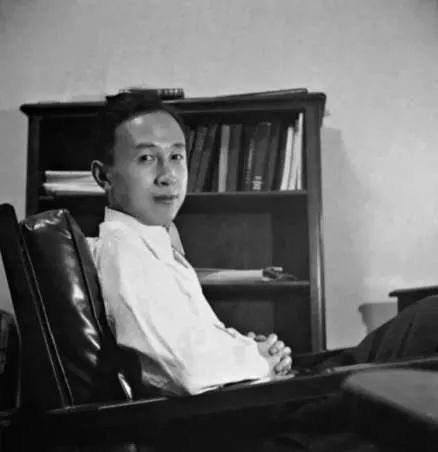
Qian in his office at Caltech (image source).
One year after arriving in the U.S., Qian earned his master’s degree in aeronautical engineering from the Massachusetts Institute of Technology (MIT). Three years later, in 1939, the 27-year-old Qian Xuesen completed his PhD at the California Institute of Technology (Caltech), the very institution where Oppenheimer had been welcomed in 1927. In 1943, Qian solidified his position in academia as an associate professor at Caltech. While at Caltech, Qian helped found NASA’s Jet Propulsion Laboratory.
When World War II began, while Oppenheimer was overseeing the Manhattan Project’s efforts to assist the U.S. in developing the atomic bomb, Qian actively supported the U.S. government. He served on the U.S. government’s Scientific Advisory Board and attained the rank of lieutenant colonel.

The first meeting of the US Department of the Air Force Scientific Advisory Board in 1946. The predecessor, the Scientific Advisory Group, was founded in 1944 to evaluate the aeronautical programs and facilities of the Axis powers of World War II. Qian can be seen standing in the back, the second on the left (image source).
After the war, Qian went to teach at MIT and returned to Caltech as a full-time professor in 1949. During that same year, Mao Zedong proclaimed the establishment of the People’s Republic of China (PRC). Just one year later, the newly-formed nation became involved in the Korean War, and China fought a bloody battle against the United States.
Red Scare: Being Labeled as a Communist
Robert Oppenheimer and Qian Xuesen both had an interest in Communism even prior to World War II, attending communist gatherings and showing sympathy towards the Communist cause.
Qian and Oppenheimer may have briefly met each other through their shared involvement in communist activities. During his time at Caltech, Qian secretly attended meetings with Frank Oppenheimer, the brother of J. Robert Oppenheimer (Monk 2013).
However, it was only after the war that their political leanings became a focal point for the FBI.
Just as the FBI accused Oppenheimer of being an agent of the Soviet Union, they quickly labeled Qian as a subversive communist, largely due to his Chinese heritage. While the government did not succeed in proving that Qian had communist ties with China during that period, they did ultimately succeed in portraying Qian as a communist affiliated with China a decade later.
During the transition from the 1940s to the 1950s, the Cold War was underway, and the anti-communist witch-hunts associated with the McCarthy era started to intensify (BBC 2020).
In 1950, the Korean War erupted, with the People’s Republic of China (PRC) joining North Korea in the conflict against South Korea, which received support from the United States. It was during this tumultuous period that the FBI officially accused Qian of communist sympathies in 1950, leading to the revocation of his security clearance despite objections from Qian’s colleagues. Four years later, in 1954, Robert Oppenheimer went through a similar process.
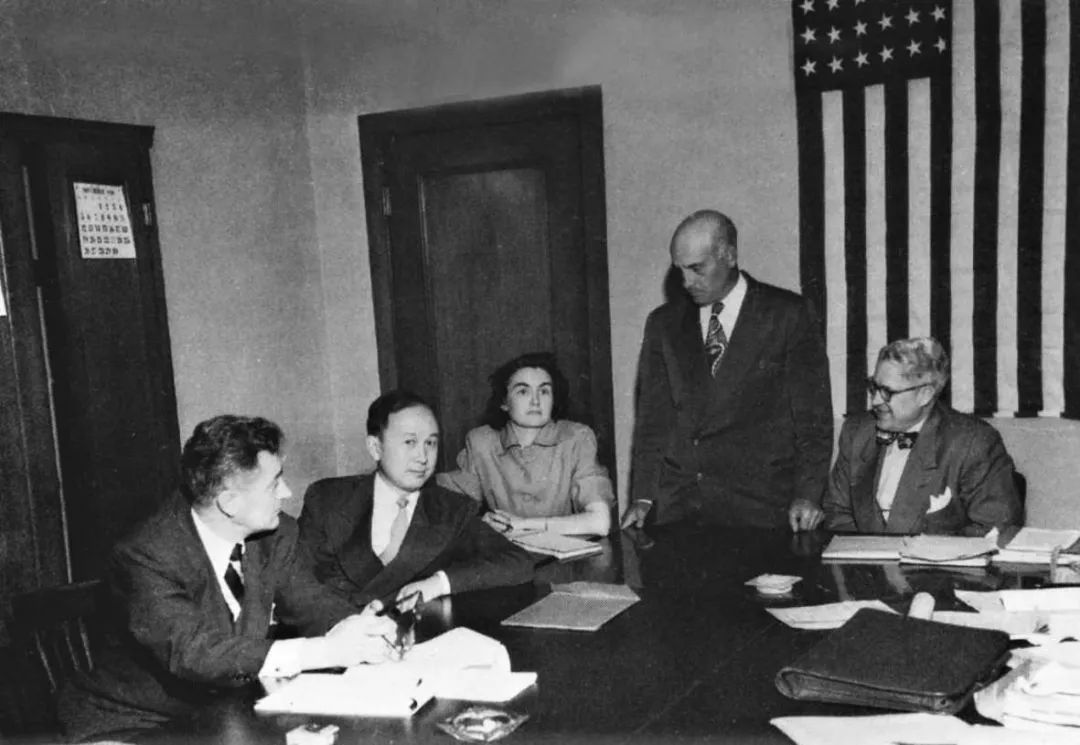
The 1950’s security hearing of Qian (second left). (Image source).
After losing his security clearance, Qian began to pack up, saying he wanted to visit his aging parents back home. Federal agents seized his luggage, which they claimed contained classified materials, and arrested him on suspicion of subversive activity. Although Qian denied any Communist leanings and rejected the accusation, he was detained by the government in California and spent the next five years under house arrest.
Five years later, in 1955, two years after the end of the Korean War, Qian was sent home to China as part of an apparent exchange for 11 American airmen who had been captured during the war. He told waiting reporters he “would never step foot in America again,” and he kept his promise (BBC 2020).
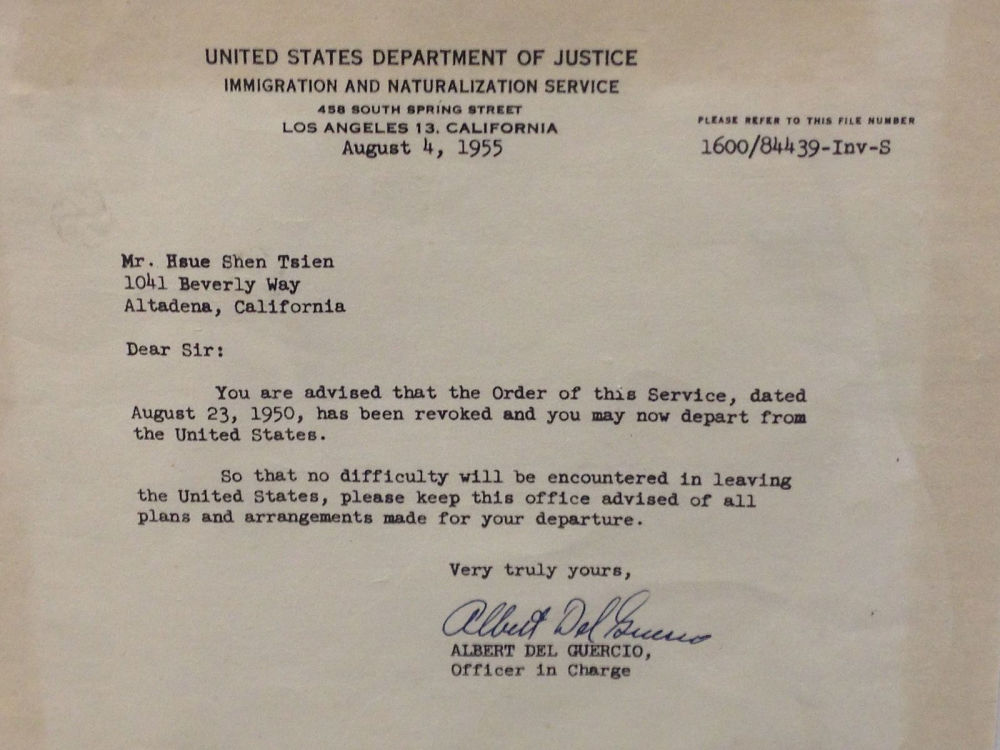
A letter from the US Immigration and Naturalization Service to Qian Xuesen, dated August 4, 1955, in which he was notified he was allowed to leave the US. The original copy is owned by Qian Xuesen Library of Shanghai Jiao Tong University, where the photo was taken. (Caption and image via wiki).
Dan Kimball, who was the Secretary of the US Navy at the time, expressed his regret about Qian’s departure, reportedly stating, “I’d rather shoot him dead than let him leave America. Wherever he goes, he equals five divisions.” He also stated: “It was the stupidest thing this country ever did. He was no more a communist than I was, and we forced him to go” (Perrett & Bradley, 2008).
Kimball may have foreseen the unfolding events accurately. After his return to China, Qian did indeed assume a pivotal role in enhancing China’s military capabilities, possibly surpassing the potency of five divisions. The missile programme that Qian helped develop in China resulted in weapons which were then fired back on America, including during the 1991 Gulf War (BBC 2020).
Returning: Becoming a National Hero
The China that Qian Xuesen had left behind was an entirely different China than the one he returned to. China, although having relatively few experts in the field, was embracing new possibilities and technologies related to rocketry and space exploration.
Within less than a month of his arrival, Qian was welcomed by the then Vice Prime Minister Chen Yi, and just four months later, he had the honor of meeting Chairman Mao himself.
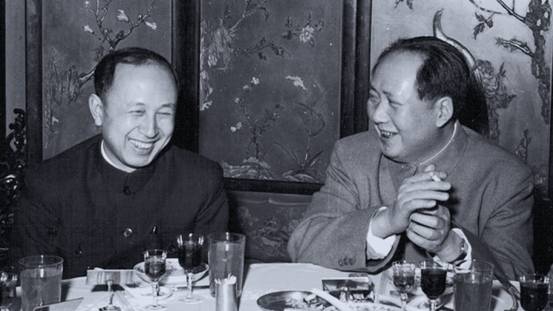
Qian and Mao (image source).
In China, Qian began a remarkably successful career in rocket science, with great support from the state. He not only assumed leadership but also earned the distinguished title of the “father” of the Chinese missile program, instrumental in equipping China with Dongfeng ballistic missiles, Silkworm anti-ship missiles, and Long March space rockets.
Additionally, his efforts laid the foundation for China’s contemporary surveillance system.
By now, Qian has become somewhat of a folk hero. His tale of returning to China despite being thwarted by the U.S. government has become like a legendary narrative in China: driven by unwavering patriotism, he willingly abandoned his overseas success, surmounted formidable challenges, and dedicated himself to his motherland.
Throughout his lifetime, Qian received numerous state medals in recognition of his work, establishing him as a nationally celebrated intellectual. From 1989 to 2001, the state-launched public movement “Learn from Qian Xuesen” was promoted throughout the country, and by 2001, when Qian turned 90, the national praise for him was on a similar level as that for Deng Xiaoping in the decade prior (Wang 2011).
Qian Xuesen remains a celebrated figure. On September 3rd of this year, a new “Qian Xuesen School” was established in Wenzhou, Zhejiang Province, becoming the sixth high school bearing the scientist’s name since the founding of the first one only a year ago.
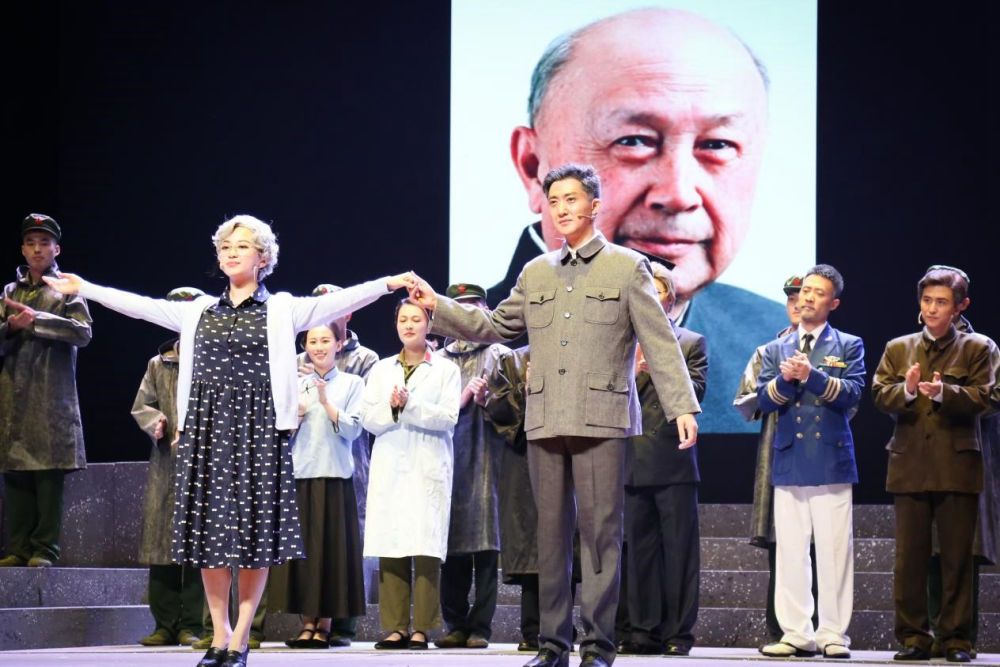
In 2017, the play “Qian Xuesen” was performed at Qian’s alma mater, Shanghai Jiaotong University. (Image source.)
Qian Xuesen’s legacy extends well beyond educational institutions. His name frequently appears in the media, including online articles, books, and other publications. There is the Qian Xuesen Library and a museum in Shanghai, containing over 70,000 artefacts related to him. Qian’s life story has also been the inspiration for a theater production and a 2012 movie titled Hsue-Shen Tsien (钱学森).2
Unanswered Questions
As is often the case when people are turned into heroes, some part of the stories are left behind while others are highlighted. This holds true for both Robert Oppenheimer and Qian Xuesen.
The Communist Party of China hailed Qian as a folk hero, aligning with their vision of a strong, patriotic nation. Many Chinese narratives avoid the debate over whether Qian’s return was linked to problems and accusations in the U.S., rather than genuine loyalty to his homeland.
In contrast, some international media have depicted Qian as a “political opportunist” who returned to China due to disillusionment with the U.S., also highlighting his criticism of “revisionist” colleagues during the Cultural Revolution and his denunciation of the 1989 student demonstrations.
Unlike the image of a resolute loyalist favored by the Chinese public, Qian’s political ideology was, in fact, not consistently aligned, and there were instances where he may have prioritized opportunity over loyalty at different stages of his life.
Qian also did not necessarily aspire to be a “flawless hero.” Upon returning to China, he declined all offers to have his biography written for him and refrained from sharing personal information with the media. Consequently, very little is known about his personal life, leaving many questions about the motivations driving him, and his true political inclinations.
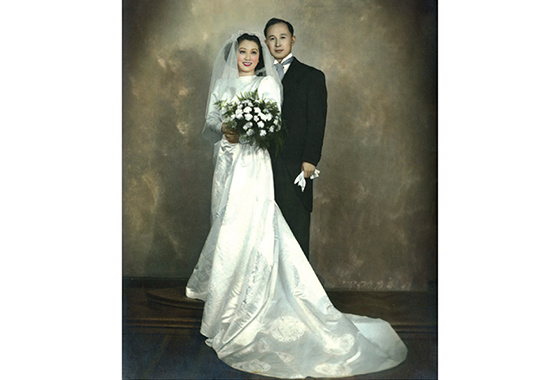
The marriage photo of Qian and Jiang. (Image source).
We do know that Qian’s wife, Jiang Ying (蒋英), had a remarkable background. She was of Chinese-Japanese mixed race and was the daughter of a prominent military strategist associated with Chiang Kai-shek. Jiang Ying was also an accomplished opera singer and later became a professor of music and opera at the Central Conservatory of Music in Beijing.
Just as with Qian, there remain numerous unanswered questions surrounding Oppenheimer, including the extent of his communist sympathies and whether these sympathies indirectly assisted the Soviet Union during the Cold War.
Perhaps both scientists never imagined they would face these questions when they first decided to study physics. After all, they were scientists, not the heroes that some narratives portray them to be.
Also read:
■ Farewell to a Self-Taught Master: Remembering China’s Colorful, Bold, and Iconic Artist Huang Yongyu
■ “His Name Was Mao Anying”: Renewed Remembrance of Mao Zedong’s Son on Chinese Social Media
By Zilan Qian
Follow @whatsonweibo
1 Some sources claim that Qian was born in Hangzhou, while others say he was born in Shanghai with ancestral roots in Hangzhou.
2The Chinese character 钱 is typically romanized as “Qian” in Pinyin. However, “Tsien” is a romanization in Wu Chinese, which corresponds to the dialect spoken in the region where Qian Xuesen and his family have ancestral roots.
This article has been edited for clarity by Manya Koetse
References (other sources hyperlinked in text)
BBC. 2020. “Qian Xuesen: The man the US deported – who then helped China into space.” BBC.com, 27 October https://www.bbc.com/news/stories-54695598 [9.16.23].
Monk, Ray. 2013. Robert Oppenheimer: A Life inside the Center, First American Edition. New York: Doubleday.
Perrett, Bradley, and James R. Asker. 2008. “Person of the Year: Qian Xuesen.” Aviation Week and Space Technology 168 (1): 57-61.
Wang, Ning. 2011. “The Making of an Intellectual Hero: Chinese Narratives of Qian Xuesen.” The China Quarterly, 206, 352-371. doi:10.1017/S0305741011000300
Get the story behind the hashtag. Subscribe to What’s on Weibo here to receive our newsletter and get access to our latest articles:
Spotted a mistake or want to add something? Please let us know in comments below or email us. First-time commenters, please be patient – we will have to manually approve your comment before it appears.
©2023 Whatsonweibo. All rights reserved. Do not reproduce our content without permission – you can contact us at info@whatsonweibo.com.
Backgrounder
Farewell to a Self-Taught Master: Remembering China’s Colorful, Bold, and Iconic Artist Huang Yongyu
Renowned Chinese artist and the creator of the ‘Blue Rabbit’ zodiac stamp Huang Yongyu has passed away at the age of 98. “I’m not afraid to die. If I’m dead, you may tickle me and see if I smile.”
Published
1 year agoon
June 15, 2023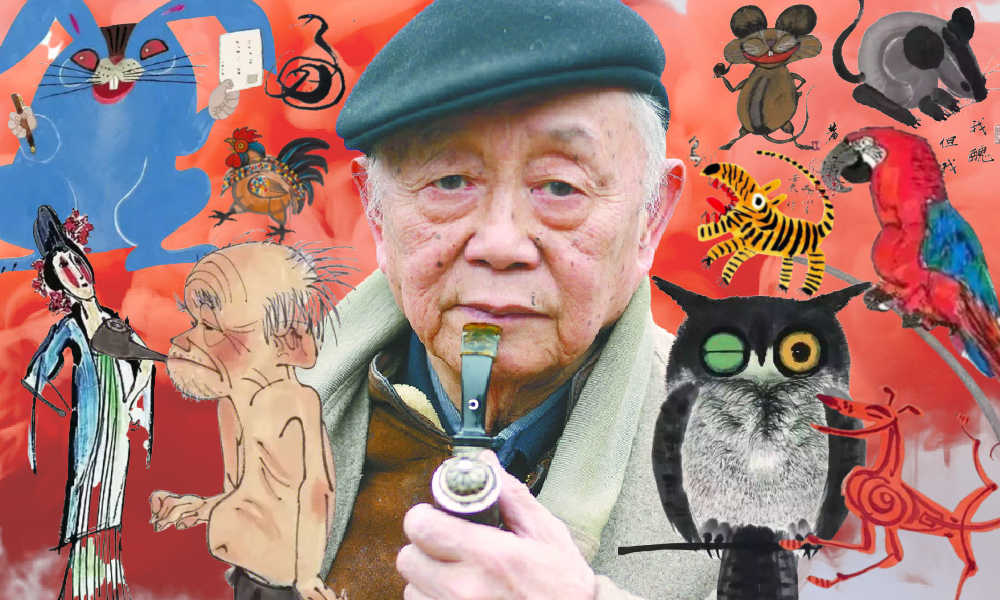
The famous Chinese painter, satirical poet, and cartoonist Huang Yongyu has passed away. Born in 1924, Huang endured war and hardship, yet never lost his zest for life. When his creativity was hindered and his work was suppressed during politically tumultuous times, he remained resilient and increased “the fun of living” by making his world more colorful.
He was a youthful optimist at old age, and will now be remembered as an immortal legend. The renowned Chinese painter and stamp designer Huang Yongyu (黄永玉) passed away on June 13 at the age of 98. His departure garnered significant attention on Chinese social media platforms this week.
On Weibo, the hashtag “Huang Yongyu Passed Away” (#黄永玉逝世#) received over 160 million views by Wednesday evening.
Huang was a member of the China National Academy of Painting (中国国家画院) as well as a Professor at the Central Academy of Fine Arts (中央美术学院).
Huang Yongyu is widely recognized in China for his notable contribution to stamp design, particularly for his iconic creation of the monkey stamp in 1980. Although he designed a second monkey stamp in 2016, the 1980 stamp holds significant historical importance as it marked the commencement of China Post’s annual tradition of releasing zodiac stamps, which have since become highly regarded and collectible items.
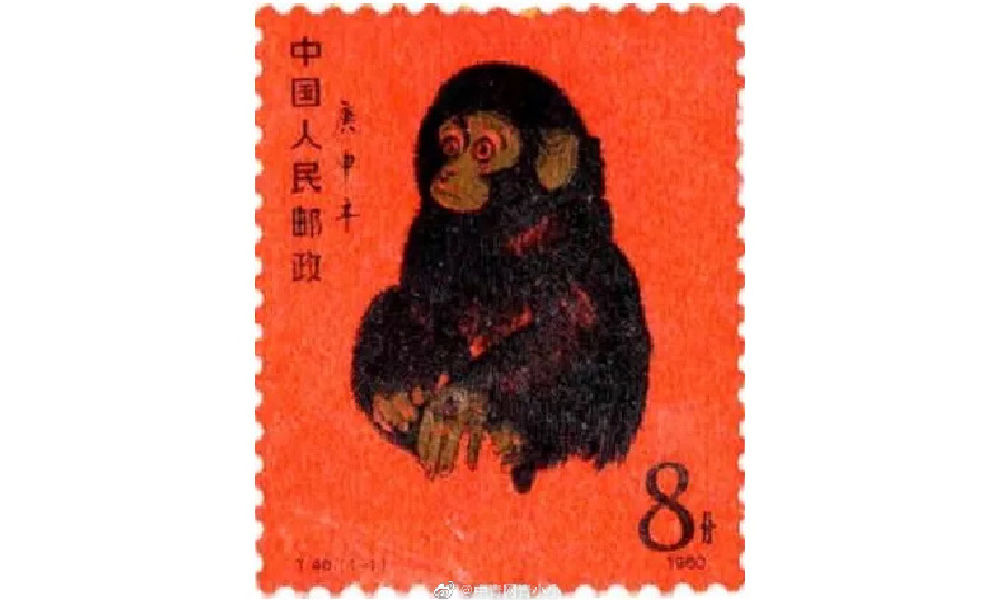
Huang’s famous money stamp that was issued by China Post in 1980.
The monkey stamp designed by Huang Yongyu has become a cherished collector’s item, even outside of China. On online marketplaces like eBay, individual stamps from this series are being sold for approximately $2000 these days.
Huang Yongyu’s latest most famous stamp was this year’s China Post zodiac stamp. The stamp, a blue rabbit with red eyes, caused some online commotion as many people thought it looked “horrific.”
Some thought the red-eyed blue rabbit looked like a rat. Others thought it looked “evil” or “monster-like.” There were also those who wondered if the blue rabbit looked so wild because it just caught Covid.
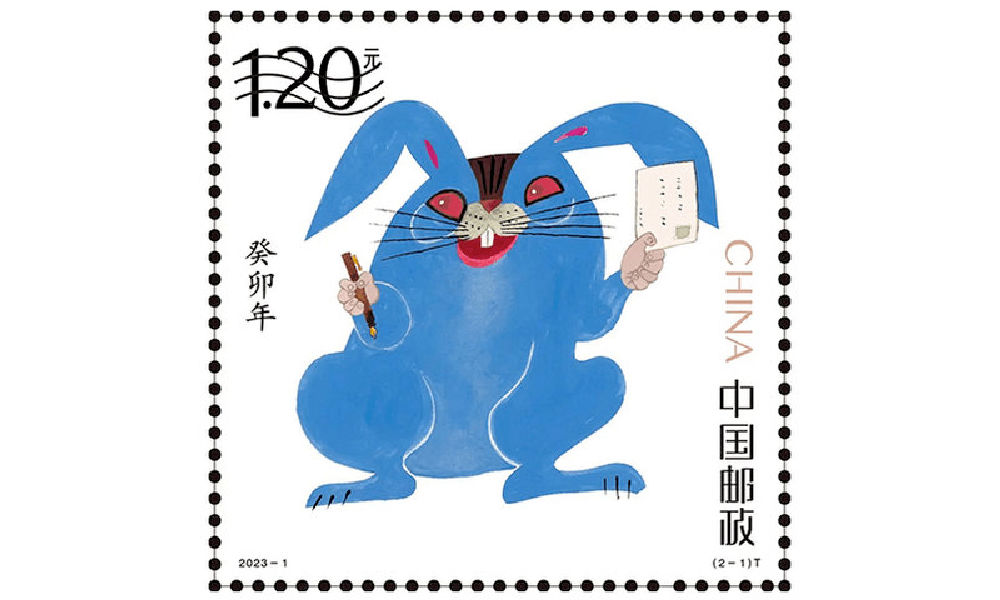
Huang’s (in)famous blue rabbit stamp.
Nevertheless, many people lined up at post offices for the stamps and they immediately sold out.
In light of the controversy, Huang Yongyu spoke about the stamps in a livestream in January of 2023. The 98-year-old artist claimed he had simply drawn the rabbit to spread joy and celebrate the new year, stating, “Painting a rabbit stamp is a happy thing. Everyone could draw my rabbit. It’s not like I’m the only one who can draw this.”
Huang’s response also went viral, with one Weibo hashtag dedicated to the topic receiving over 12 million views (#蓝兔邮票设计者直播回应争议#) at the time. Those defending Huang emphasized how it was precisely his playful, light, and unique approach to art that has made Huang’s work so famous.
A Self-Made Artist
“I’m ugly, but my mum likes me”
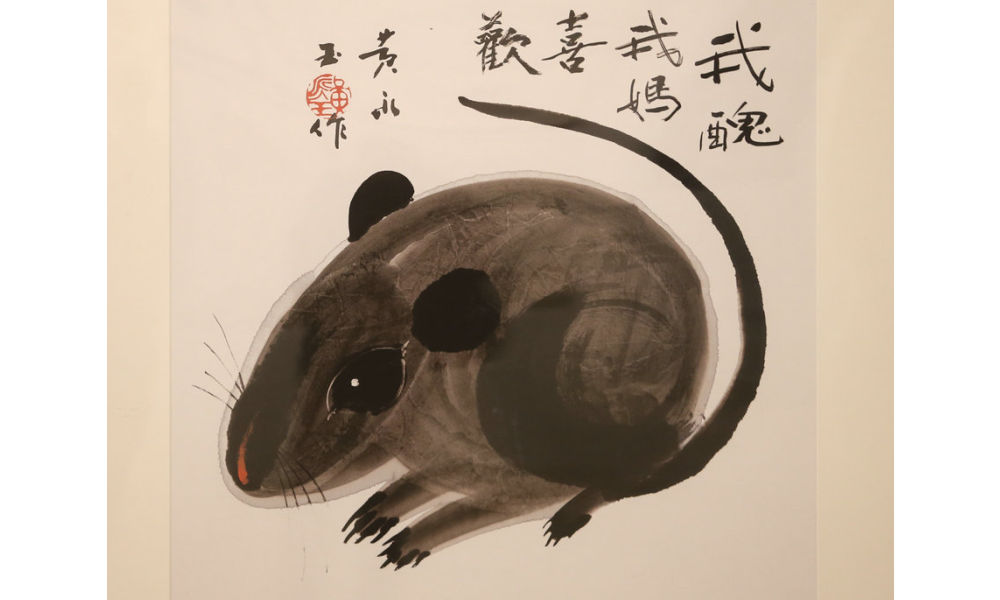
‘Ugly Mouse’ by Huang Yongyu [Image via China Daily].
Huang Yongyu was born on August 9, 1924, in Hunan’s Chengde as a native of the Tujia ethnic group.
He was born into an extraordinary family. His grandfather, Huang Jingming (黄镜铭), worked for Xiong Xiling (熊希齡), who would become the Premier of the Republic of China. His first cousin and lifelong friend was the famous Chinese novelist Shen Congwen (沈从文). Huang’s father studied music and art and was good at drawing and playing the accordion. His mother graduated from the Second Provincial Normal School and was the first woman in her county to cut her hair short and wear a short skirt (CCTV).
Born in times of unrest and poverty, Huang never went to college and was sent away to live with relatives at the age of 13. His father would die shortly after, depriving him of a final goodbye. Huang started working in various places and regions, from porcelain workshops in Dehua to artisans’ spaces in Quanzhou. At the age of 16, Huang was already earning a living as a painter and woodcutter, showcasing his talents and setting the foundation for his future artistic pursuits.
When he was 22, Huang married his first girlfriend Zhang Meixi (张梅溪), a general’s daughter, with whom he shared a love for animals. He confessed his love for her when they both found themselves in a bomb shelter after an air-raid alarm.
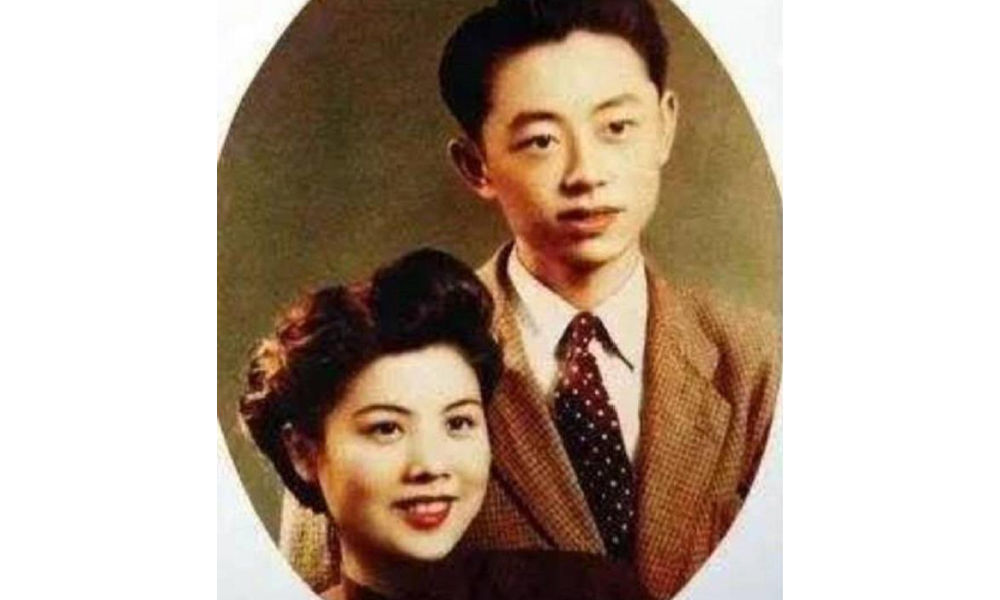
Huang and Zhang Meixi [163.com]
In his twenties, Huang Yongyu emerged as a sought-after artist in Hong Kong, where he had relocated in 1948 to evade persecution for his left-wing activities. Despite achieving success there, he heeded Shen Congwen’s advice in 1953 and moved to Beijing. Accompanied by his wife and their 7-month-old child, Huang took on a teaching position at the esteemed Central Academy of Fine Arts (中央美术学院).
The couple raised all kinds of animals at their Beijing home, from dogs and owls to turkeys and sika deers, and even monkeys and bears (Baike).
Throughout Huang’s career, animals played a significant role, not only reflecting his youthful spirit but also serving as vehicles for conveying satirical messages.
One recurring motif in his artwork was the incorporation of mice. In one of his famous works, a grey mouse is accompanied by the phrase ‘I’m ugly, but my mum likes me’ (‘我丑,但我妈喜欢’), reinforcing the notion that regardless of our outward appearance or circumstances, we remain beloved children in the eyes of our mothers.
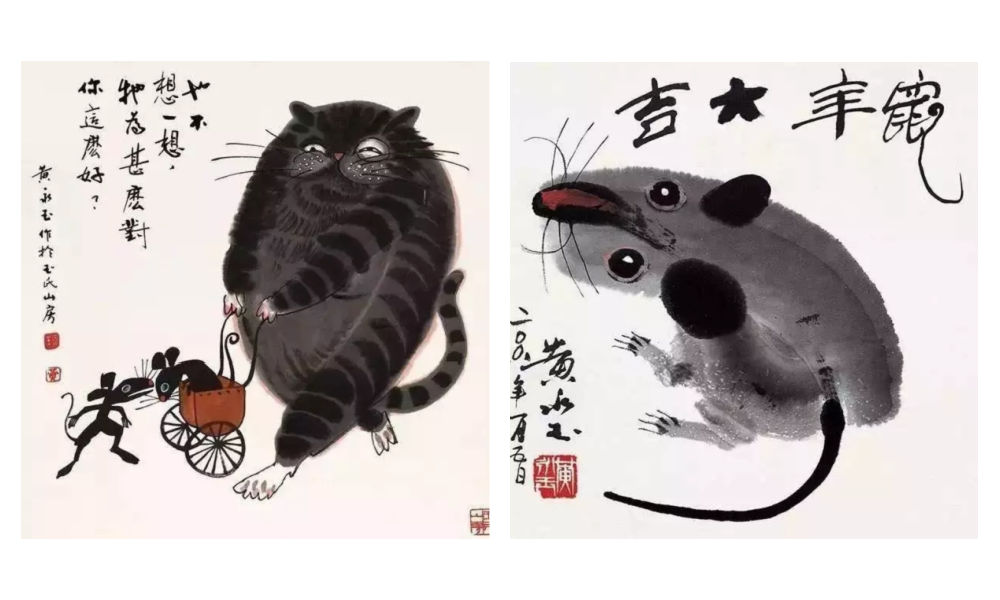
As a teacher, Huang liked to keep his lessons open-minded and he, who refused to join the Party himself, stressed the importance of art over politics. He would hold “no shirt parties” in which his all-male studio students would paint in an atmosphere of openness and camaraderie during hot summer nights (Andrews 1994, 221; Hawks 2017, 99).
By 1962, creativity in the classroom was limited and there were far more restrictions to what could and could not be created, said, and taught.
Bright Colors in Dark Times
“Strengthen my resolve and increase the fun of living”
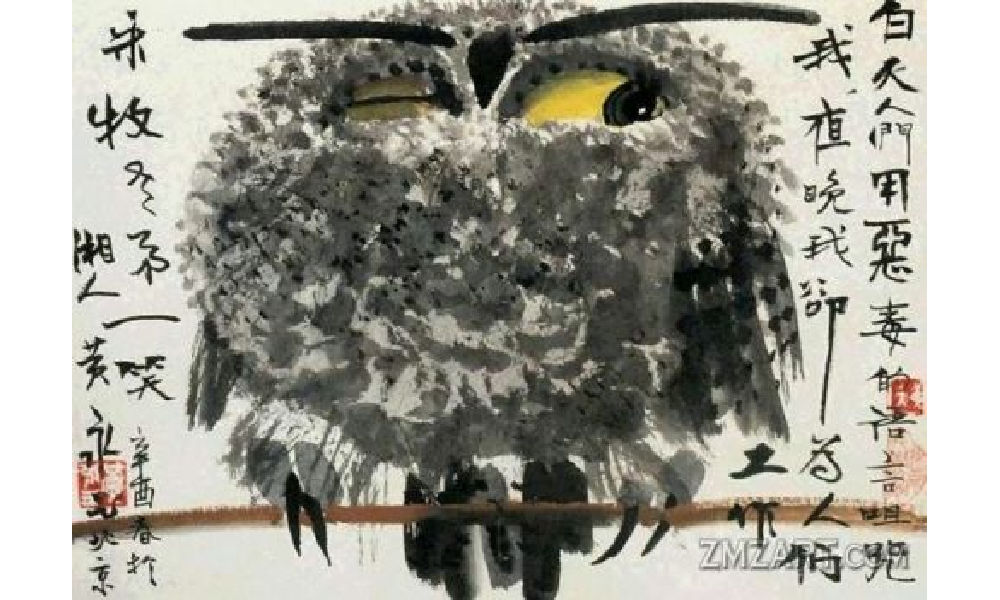
Huang Yongyu’s winking owl, 1973, via Wikiart.
In 1963, Huang was sent to the countryside as part of the “Four Cleanups” movement (四清运动, 1963-1966). Although Huang cooperated with the requirement to attend political meetings and do farm work, he distanced himself from attempts to reform his thinking. In his own time, and even during political meetings, he would continue to compose satirical and humorous pictures and captions centered around animals, which would later turn into his ‘A Can of Worms’ series (Hawks 2017, 99; see Morningsun.org).
Three years later, at the beginning of the Cultural Revolution, many Chinese major artists, including Huang, were detained in makeshift jails called ‘niupeng‘ (牛棚), cowsheds. Huang’s work was declared to be counter-revolutionary, and he was denounced and severely beaten. Despite the difficult circumstances, Huang’s humor and kindness would remind his fellow artist prisoners of the joy of daily living (2017, 95-96).
After his release, Huang and his family were relocated to a cramped room on the outskirts of Beijing. The authorities, thinking they could thwart his artistic pursuits, provided him with a shed that had only one window, which faced a neighbor’s wall. However, this limitation didn’t deter Huang. Instead, he ingeniously utilized vibrant pigments that shone brightly even in the dimly lit space.
During this time, he also decided to make himself an “extra window” by creating an oil painting titled “Eternal Window” (永远的窗户). Huang later explained that the flower blossoms in the paining were also intended to “strengthen my resolve and increase the fun of living” (Hawks 2017, 4; 100-101).
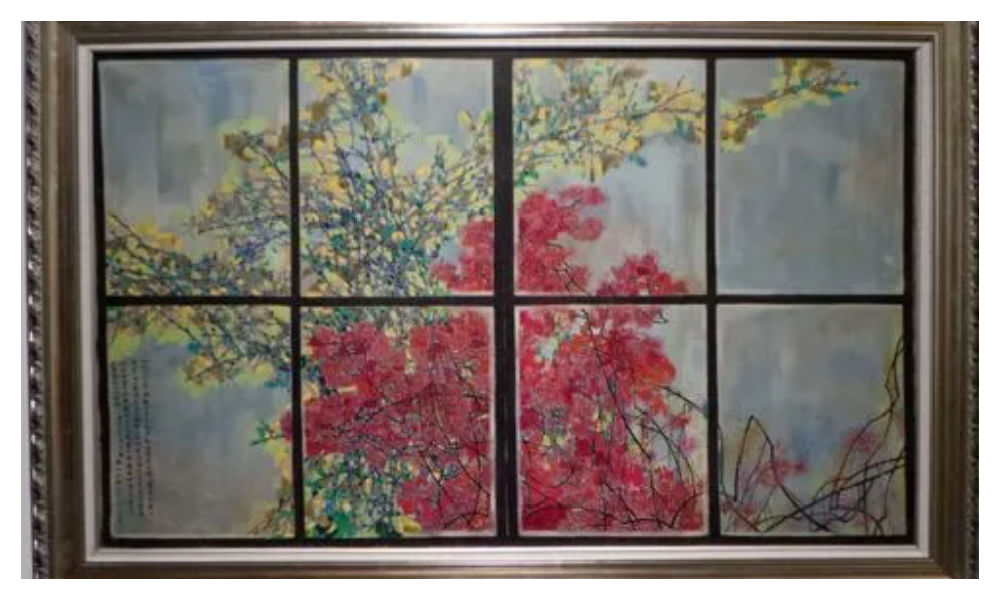
Huang Yongyu’s Eternal Window [Baidu].
In 1973, during the peak of the Cultural Revolution, Huang painted his famous winking owl. The calligraphy next to the owl reads: “During the day people curse me with vile words, but at night I work for them” (“白天人们用恶毒的语言诅咒我,夜晚我为他们工作”) (Matthysen 2021, 165).
The painting was seen as a display of animosity towards the regime, and Huang got in trouble for it. Later on in his career, however, Huang would continue to paint owls. In 1977, when the Cultural Revolution had ended, Huang Yongyu painted other owls to ridicules his former critics (2021, 174).
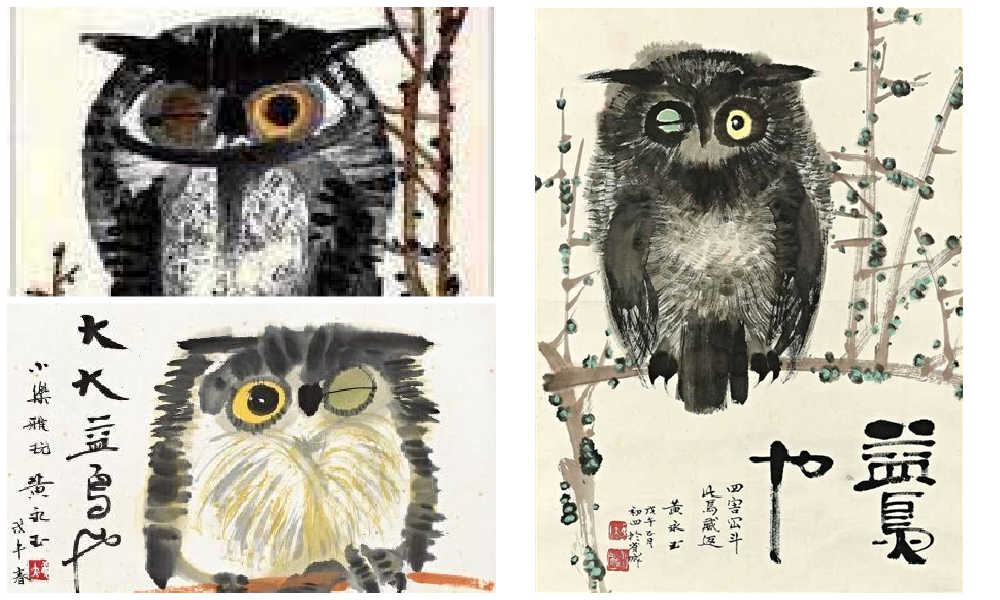
According to art scholar Shelly Drake Hawks, Huang Yongyu employed animals in his artwork to satirize the realities of life under socialism. This approach can be loosely compared to George Orwell’s famous novel Animal Farm.
However, Huang’s artistic style, vibrant personal life, and boundary-pushing work ethic also draw parallels to Picasso. Like Picasso, Huang embraced a colorful life, adopted an innovative approach to art, and challenged artistic norms.
An Optimist Despite All Hardships
“Quickly come praise me, while I’m still alive”
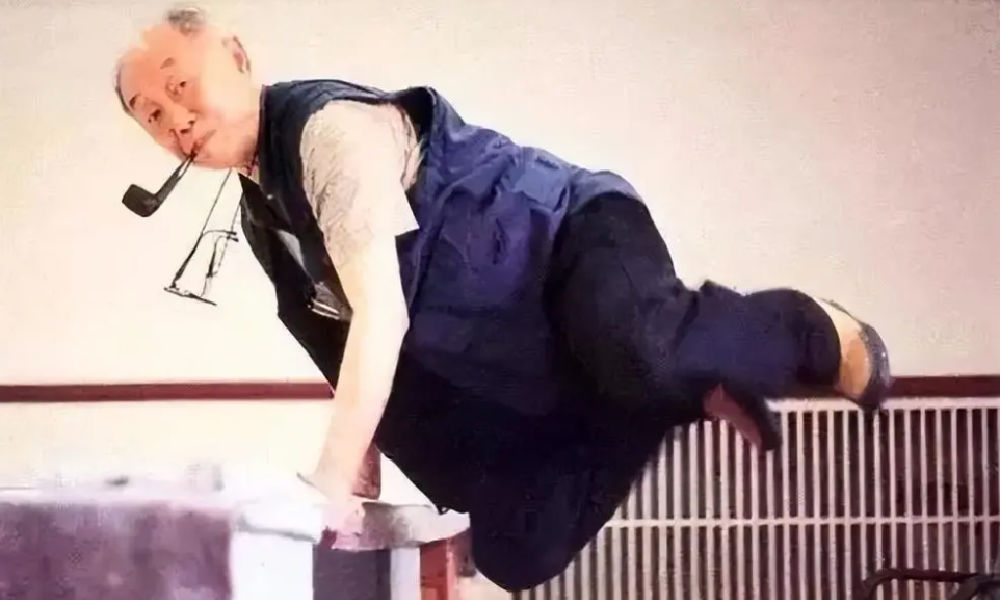
Huang Yongyu will be remembered in China with love and affection for numerous reasons. Whether it is his distinctive artwork, his mischievous smile and trademark pipe, his unwavering determination to follow his own path despite the authorities’ expectations, or his enduring love for his wife of over 75 years, there are countless aspects to appreciate and admire about Huang.
One things that is certainly admirable is how he was able to maintain a youthful and joyful attitude after suffering many hardships and losing so many friends.
“An intriguing soul. Too wonderful to describe,” one Weibo commenter wrote about Huang, sharing pictures of Huang Yongyu’s “Scenes of Pooping” (出恭图) work.
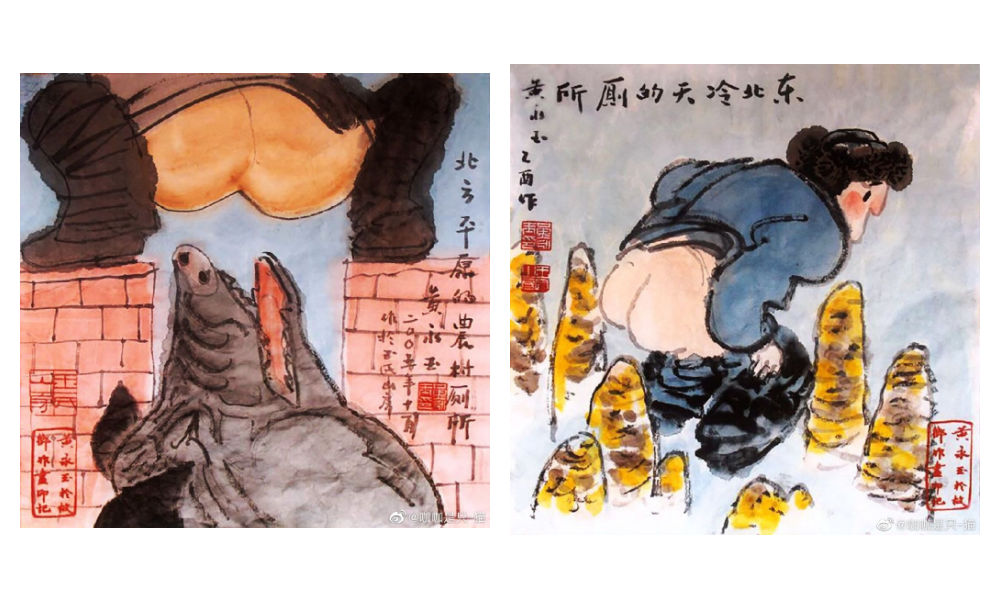
Old age did not hold him back. At the age of 70, his paintings sold for millions. When he was in his eighties, he was featured on the cover of Esquire (时尚先生) magazine.
At the age of 82, he stirred controversy in Hong Kong with his “Adam and Eve” sculpture featuring male and female genitalia, leading to complaints from some viewers. When confronted with the backlash, Huang answered, “I just wanted to have a taste of being sued, and see how the government would react” (Ora Ora).
I'm guessing the 98-year-old Huang loved the controversy. When confronted with backlash for his sculpture featuring male and female genitalia in 2007 Hong Kong, Huang answered, "I just wanted to have a taste of being sued, and see how the government would react." pic.twitter.com/kG0MVVM4SN
— Manya Koetse (@manyapan) June 15, 2023
In his nineties, he started driving a Ferrari. He owned mansions in his hometown in Hunan, in Beijing, in Hong Kong, and in Italy – all designed by himself (Chen 2019).
Huang kept working and creating until the end of his life. “It’s good to work diligently. Your work may be meaningful. Maybe it won’t be. Don’t insist on life being particularly meaningful. If it’s happy and interesting, then that’s great enough.”
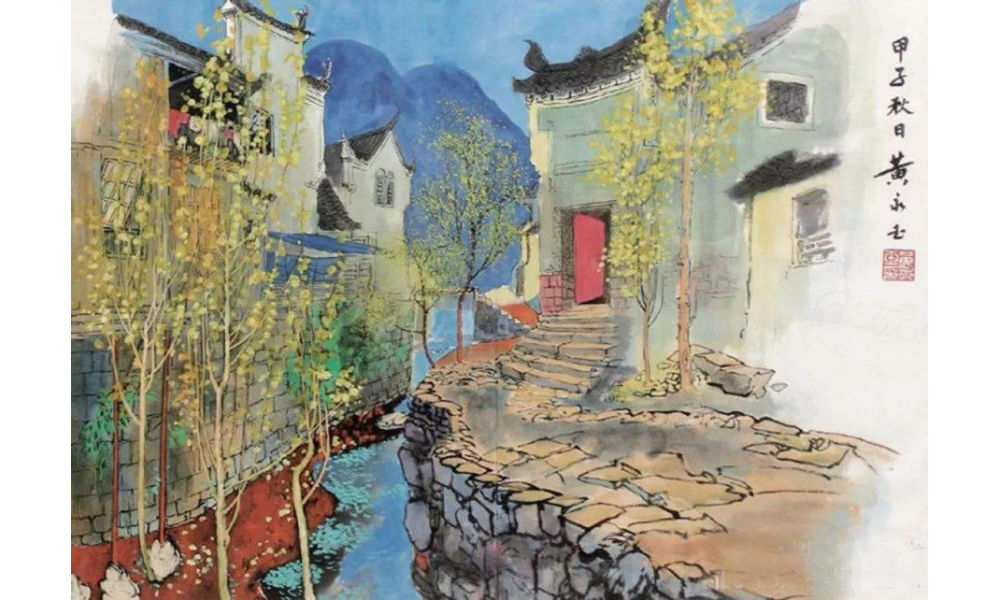
“Hometown Scenery” or rather “Hunan Scenery” (湘西风景) by Huang.
Huang did not dread the end of his life.
“My old friends have all died, I’m the only one left,” he said at the age of 95. He wrote his will early and decided he wanted a memorial service for himself before his final departure. “Quickly come praise me, while I’m still alive,” he said, envisioning himself reclining on a chair in the center of the room, “listening to how everyone applauds me” (CCTV, Sohu).
He stated: “I don’t fear death at all. I always joke that when I die, you should tickle me first and see if I’ll smile” (“对死我是一点也不畏惧,我开玩笑,我等死了之后先胳肢我一下,看我笑不笑”).
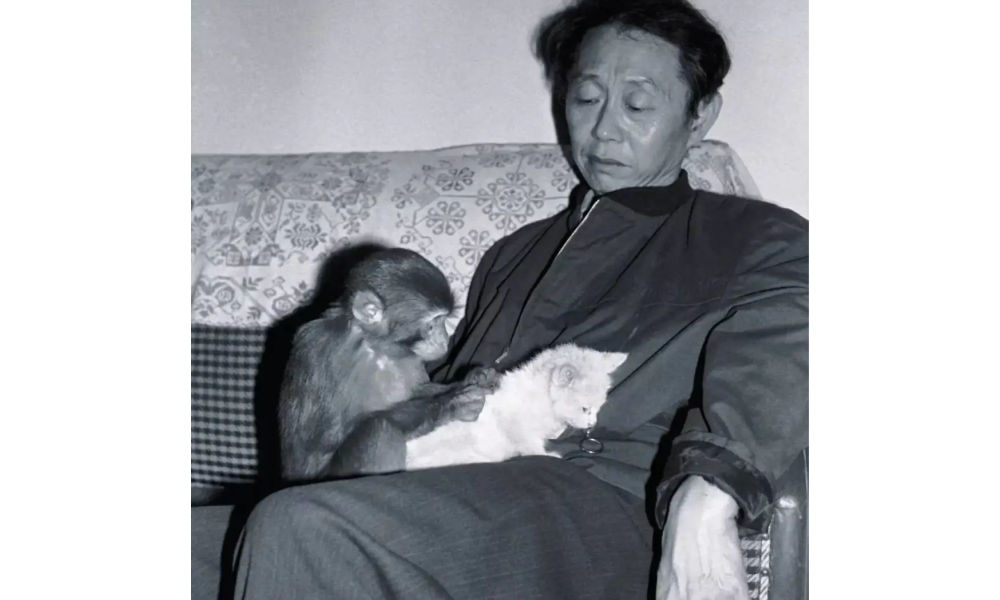
Huang with Yiwo (伊喔), the original model for the monkey stamp [Shanghai Observer].
Huang also was not sentimental about what should happen to his ashes. In a 2019 article in Guangming Daily, it was revealed that he suggested to his wife the idea of pouring his ashes into the toilet and flushing them away with the water.
However, his wife playfully retorted, saying, “No, that won’t do. Your life has been too challenging; you would clog the toilet.”
To this, Huang responded, “Then wrap my ashes into dumplings and let everyone [at the funeral] eat them, so you can tell them, ‘You’ve consumed Huang Yongyu’s ashes!'”
But she also opposed of that idea, saying that they would vomit and curse him forever.
Nevertheless, his wife expressed opposition to this idea, citing concerns that it would cause people to vomit and curse him indefinitely.
In response, Huang declared, “Then let’s forget about my ashes. If you miss me after I’m gone, just look up at the sky and the clouds.” Eventually, his wife would pass away before him, in 2020, at the age of 98, having spent 77 years together with Huang.
Huang will surely be missed. Not just by the loved ones he leaves behind, but also by millions of his fans and admirers in China and beyond.
“We will cherish your memory, Mr. Huang,” one Weibo blogger wrote. Others honor Huang by sharing some of his famous quotes, such as, “Sincerity is more important than skill, which is why birds will always sing better than humans” (“真挚比技巧重要,所以鸟总比人唱得好”).
Among thousands of other comments, another social media user bid farewell to Huang Yongyu: “Our fascinating Master has transcended. He is now a fascinating soul. We will fondly remember you.”
By Manya Koetse
Get the story behind the hashtag. Subscribe to What’s on Weibo here to receive our newsletter and get access to our latest articles:
References
Andrews, Julia Frances. 1994. Painters and Politics in the People’s Republic of China, 1949-1979. Berkley: University of California Press.
Baike. “Huang Yongyu 黄永玉.” Baidu Baike https://baike.baidu.com/item/%E9%BB%84%E6%B0%B8%E7%8E%89/1501951 [June 14, 2023].
CCTV. 2023. “Why Everyone Loves Huang Yongyu [为什么人人都爱黄永玉].” WeChat 央视网 June 14.
Chen Hongbiao 陈洪标. 2019. “Most Spicy Artist: Featured in a Magazine at 80, Flirting with Lin Qingxia at 91, Playing with Cars at 95, Wants Memorial Service While Still Alive [最骚画家:80岁上杂志,91岁撩林青霞,95岁玩车,活着想开追悼会].” Sohu/Guangming Daily March 16: https://www.sohu.com/a/301686701_819105 [June 15, 2023].
Hawks, Shelley Drake. 2017. The Art of Resistance Painting by Candlelight in Mao’s China. Seattle: University of Washington Press.
Matthysen, Mieke. 2021. Ignorance is Bliss: The Chinese Art of Not Knowing. Palgrave Macmillan.
Ora Ora. “HUANG YONGYU 黃永玉.” Ora Ora https://www.ora-ora.com/artists/103-huang-yongyu/ [June 15, 2023].
Spotted a mistake or want to add something? Please let us know in comments below or email us. First-time commenters, please be patient – we will have to manually approve your comment before it appears.
©2023 Whatsonweibo. All rights reserved. Do not reproduce our content without permission – you can contact us at info@whatsonweibo.com.
Subscribe

Weibo Watch: The Future is Here

“Bye Bye Biden”: Biden’s Many Nicknames in Chinese

Enjoying the ‘Sea’ in Beijing’s Ditan Park

A Triumph for “Comrade Trump”: Chinese Social Media Reactions to Trump Rally Shooting

Weibo Watch: Get Up, Stand Up

The Tragic Story of “Fat Cat”: How a Chinese Gamer’s Suicide Went Viral

“Old Bull Eating Young Grass”: 86-Year-Old Chinese Painter Fan Zeng Marries 36-Year-Old Xu Meng

A Brew of Controversy: Lu Xun and LELECHA’s ‘Smoky’ Oolong Tea

Singing Competition or Patriotic Fight? Hunan TV’s ‘Singer 2024’ Stirs Nationalistic Sentiments

Zara Dress Goes Viral in China for Resemblance to Haidilao Apron

Weibo Watch: The Battle for the Bottom Bed

About the “AI Chatbot Based on Xi Jinping” Story

China’s Intensified Social Media Propaganda: “Taiwan Must Return to Motherland”

Weibo Watch: Telling China’s Stories Wrong

Saying Goodbye to “Uncle Wang”: Wang Wenbin Becomes Chinese Ambassador to Cambodia
Get in touch
Would you like to become a contributor, or do you have any tips or suggestions? Get in touch here!
Popular Reads
-

 China Insight3 months ago
China Insight3 months agoThe Tragic Story of “Fat Cat”: How a Chinese Gamer’s Suicide Went Viral
-

 China Music4 months ago
China Music4 months agoThe Chinese Viral TikTok Song Explained (No, It’s Not About Samsung)
-

 China Digital10 months ago
China Digital10 months agoToo Sexy for Weibo? Online Discussions on the Concept of ‘Cābiān’
-

 China Arts & Entertainment12 months ago
China Arts & Entertainment12 months agoBehind 8 Billion Streams: Who is Dao Lang Cursing in the Chinese Hit Song ‘Luocha Kingdom’?




